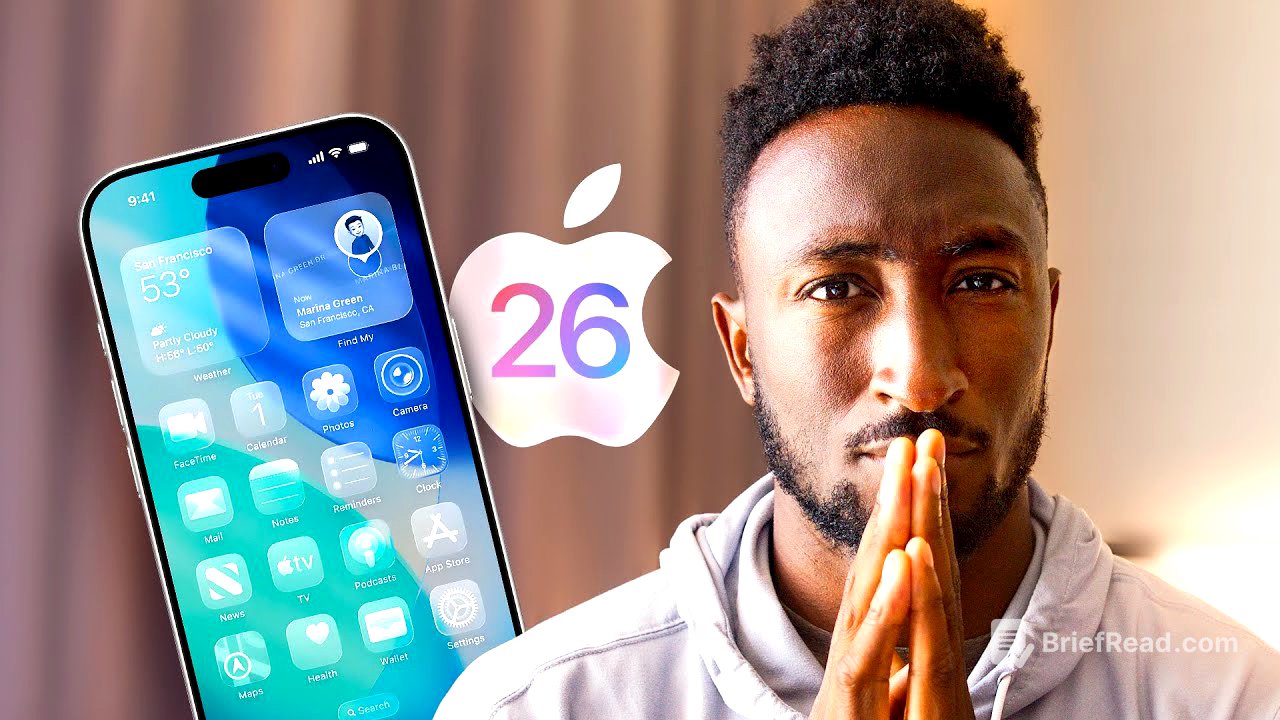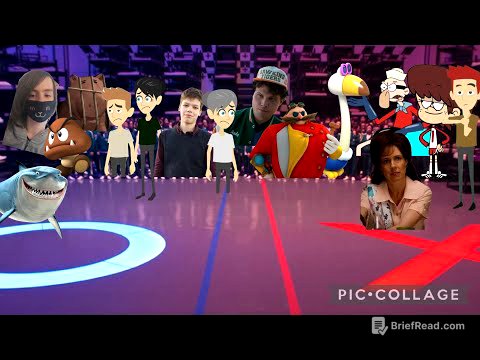TLDR;
Marques Brownlee reviews Apple's WWDC 2025, noting the company's approach to software updates and AI integration. Apple is unifying its operating systems under version 26 and introducing a "Liquid Glass" design across all platforms. The updates include new features for iOS, watchOS, tvOS, macOS, visionOS, and iPadOS, with a focus on user experience and integration across devices. While AI enhancements are present, they are subtle, with a promise of more significant AI developments, particularly for Siri, in the future.
- Unified OS versioning to simplify the user experience.
- Introduction of "Liquid Glass" design for a consistent look across devices.
- Enhanced multitasking and file management on iPadOS, bringing it closer to macOS functionality.
All the Things [0:26]
Apple's WWDC 2025 event revealed a strategic decision to focus on a broad range of software enhancements rather than heavily emphasising AI, contrasting with the industry's current obsession with AI technologies like Gemini and GPT. Apple seems to be taking the approach of enhancing existing features and introducing new ones across its ecosystem, hoping these improvements will satisfy users. The company is unifying all its operating systems under version 26 to simplify the user experience and introducing a new "Liquid Glass" design aesthetic across all platforms.
iOS 26 [2:01]
iOS 26 features subtly updated icons and a transparent "Liquid Glass" lock screen clock that adapts to the background. A new optional home screen setting allows for transparent widgets and icons, though this may affect readability. The camera app has been redesigned for the first time in over a decade, simplifying the interface to focus on photo, video, and shutter buttons, with additional modes and settings hidden behind a swipe. The FaceTime app has a new landing page for quick access to contacts, and the Phone app consolidates voicemail, missed calls, and contacts. Two Pixel phone features have been matched: call screening for unknown numbers and a hold assist feature. iMessage gains native poll support, typing indicators in group chats, and the ability to add images as chat backgrounds. Live translation has been added to FaceTime, Messages, and the Phone app, utilising on-device AI models.
Liquid Glass concerns [5:39]
The primary concern with the new "Liquid Glass" design is its impact on readability. While visually appealing, the transparency and glass-like effects can make text in notifications, menus, and widgets harder to read. The operating system is supposed to adapt by providing dark backgrounds for light elements and vice versa, but inconsistent backgrounds can create readability issues.
WatchOS 26 [6:35]
watchOS 26 incorporates the "Liquid Glass" design with prominent touch areas, reflections, and glass buttons. A new wrist-flick gesture allows users to dismiss notifications, calls, and alarms by simply flicking their wrist. The update also introduces a customisable, high-energy workout companion that provides motivational audio cues during workouts, including random stats and encouragement. Group fitness challenges are still absent.
tvOS 26 [7:53]
tvOS 26 receives the "Liquid Glass" treatment, though the changes are subtle. The icons appear to have a slightly different sheen. More content is available, but there are no other major upgrades.
macOS Tahoe [8:10]
macOS 26, also named Tahoe, features noticeable "Liquid Glass" elements, some of which are visually appealing while others, like the Control Centre buttons, appear less so. The desktop can be cleared of widgets, and the menu bar is fully transparent. Live Activities from the iPhone now appear in the Mac menu bar, providing convenient access to information like delivery updates or flight details. The Mac also gets the updated Phone app with voicemail and hold features. The biggest update is to Spotlight, which now includes features similar to the productivity app Raycast, such as opening applications, creating shortcuts, managing windows, and searching files.
visionOS 26 [10:55]
visionOS 26, technically the third version but now aligned as version 26, introduces new widgets that can be pinned in fixed locations and customised in size, depth, and colour. The Vision Pro will now remember the placement of windows and widgets after restarts. Personas have been updated for improved realism, and support for the PlayStation VR2 controller has been added. A new Jupiter environment is available, and native 360 video playback is supported for cameras from GoPro, Insta 360, and Canon.
iPadOS 26 [12:48]
iPadOS 26 brings significant changes, enhancing multitasking and file management to be more like macOS. It includes the "Liquid Glass" design, the new Phone app, and updated icons and widgets. A new multitasking system allows users to resize apps into floating windows, stack them, and freely manage them. A three-dot control in each window allows minimising and reshaping apps, similar to macOS. A Mac-like menu bar at the top of the screen provides file, edit, view, and help menus. The cursor has been redesigned to resemble the Mac cursor, and a new Files app allows sorting files like the Finder app on macOS. Background activities are now supported, allowing tasks like exporting in Final Cut Pro to continue in the background.
What about AI and Siri? [16:11]
The WWDC keynote mentioned "Siri" sparingly, indicating a lack of focus on AI. Apple's AI strength lies in the integration of its features within its ecosystem. Many features utilise AI but are not explicitly labelled as such. Apple is making its core models available to developers for building AI features into their apps. While these models may not be the best globally, they are on-device, local, and can be used offline. A major Siri update is planned for 2026. On-screen capabilities for visual intelligence have been added, with the iPhone now supporting a feature similar to Android's "circle to search" for screenshots.









